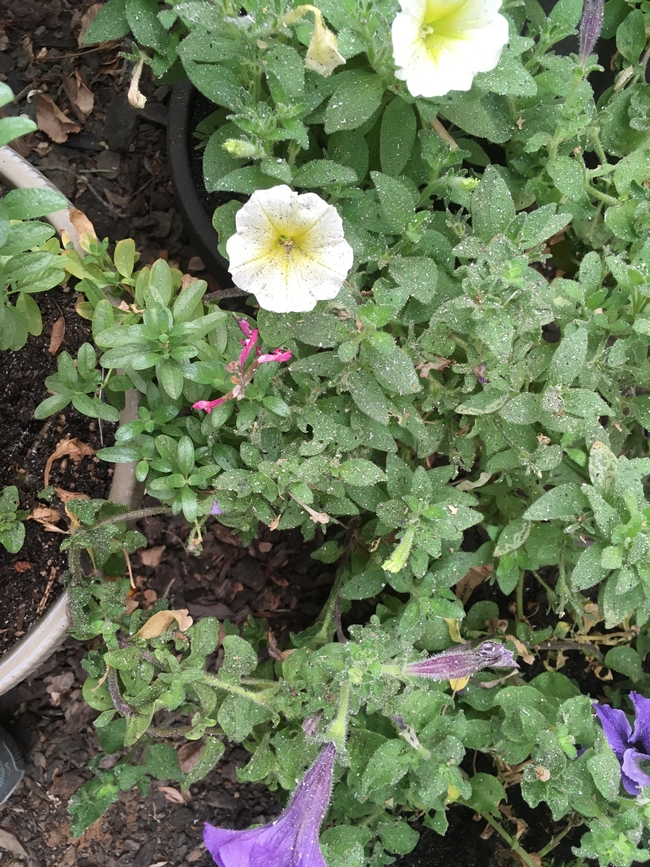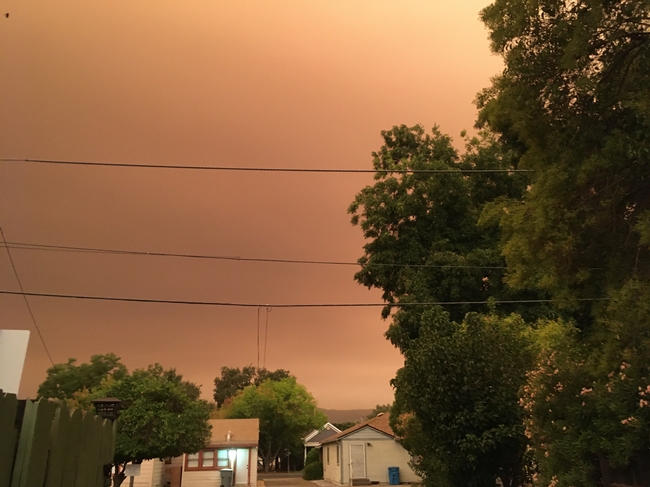Ash
Ash is raining down on us and our gardens. Have you checked your outdoor plants lately to see just how much ash is coating the leaves? Ash can sometimes be beneficial in small amounts contributing trace elements to plants, but a slightly thicker layer can interfere with photosynthesis. And if nearby structures went up in flames, toxins like asbestos or cadmium could have been released. Should you care about it? What can you do about all the ash?
Ash from wildfires is relatively non-toxic, but all ash contains chemicals that have the potential to cause cancer. Older homes, barns, or other structures, when burned have the potential to release asbestos and or lead. Newer structures, especially with synthetics, (nylon carpets, vinyl flooring, latex paint, for example) can release their own toxins into the air, soil, and water. Ash can even wreck your car's paint!
Ash can cause skin reactions in people sensitive to it, and lung and heart problems in people with pre-existing conditions. Even for those without a medical history, smoke and ash can cause headaches, scratchy eyes, sore throat, and coughing.
Ash is also a problem when it comes to our plants. With a thick enough layer, it can interfere with photosynthesis. With a 2 cm. layer on the soil, germination can be blocked. Ash landing on your vegetable garden can release toxic chemicals into edibles. Ash raises pH contributing to more alkaline soil. When wood burns, calcium is emitted and contributes to liming of the soil. This negatively impacts the normal bacteria flora in the soil, so that plants that like alkaline soils take off. With a thick enough ash layer, spore-formers will also flourish. Ash can also form a hydrophobic layer - water runs off the thick layer of ash instead of penetrating through to the soil. Later, with a subsequent rain, the ash can slough off into waterways and kill creatures living in and around the water.
How do we get rid of ash safely? Here are words of advice gleaned from fire agencies, the California Department of Public Health, and several county governmental agencies.
First of all, if the ash removal is to be from next to burned structures with the potential for released toxins, leave it to the professionals. If not, you can get ready for the project.
Dress for the job: long pants, long sleeves, gloves, head covering, safety goggles, and a mask. N95 or P100 is preferred. The surgical masks we have been wearing for COVID don't filter out the fine particles of ash.
From San Diego County Emergency Site comes “The 4 Cs”: Control, Contain, Capture, Deck Cleaning. Control ash from getting re-blown into the air. NO leaf blowers. A vacuum should have a HEPA filter. Contain ash by gently sweeping it up and then damp mopping. Collect ash into a closed container, tie it off, and put it in the gray can. That prevents it from being re-launched into the air with garbage pickup. Storm drains also need protection from ash and ash removal, so any water used for cleaning should be diverted away from storm drains and water sources. The same precautions need to be taken for deck cleaning.
Most of the sites recommend barely misting the ash and then gently sweeping it up. You don't want a slurry that you have to scoop up, and that can harden and become even harder to remove if you didn't get it all removed the first time.
From Santa Barbara County Air Pollution Control District's Asbestos and Fire Cleanup page: Wash all your home-grown edibles thoroughly before eating. And from me: If in doubt of its safety, throw it out in the gray can.
From San Diego County: If there is just a little bit of ash covering smaller plants, use a damp cloth to wipe the leaves. If a small amount of ash is on your natural grass lawn, in your vegetable garden, or in your flowerbeds, dampen the area with a garden hose every couple of days to encourage the ash to work into the soil. You can also use a hose to rinse off plants, bushes, and trees. Don't blast the vegetation with water. Know that your acid-loving plants may suffer.
From Boulder County (Colorado) Safe Cleanup of Wildfire Ash: Keep kids and pets away from the ash and debris. Wash the toys that have ash on them before letting them play with them again. If you get ash on yourself, shower as soon as possible. If your pets or kids have ash on them, they need baths, too.
From the California Dept. of Public Health: Remove your shoes when you enter your home. Even better use a sticky mat to catch the ash before it gets tracked into the house.
Eventually, the rain will come, the ash will dissipate, and our air, soil, and water will be clean again.

Ash on Petunia. (photos by Michelle Davis)

orange sky mdavis 2020


Posted by Jenni Dodini on September 19, 2020 at 5:16 PM